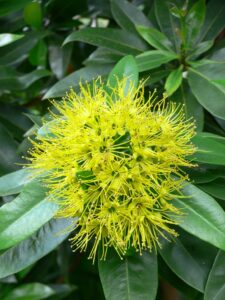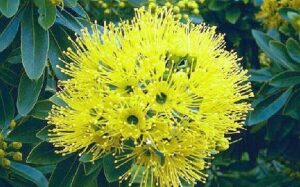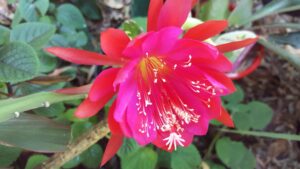
The adult Bean Fly is a shiny black fly about 3.5mm long, larvae are cream with dark mouthparts and grow to 3mm long and the pupae are brown and cylindrical with rounded ends. It is found here on the Coffs Coast due to the moist humid conditions we have.
The female lays eggs in punctures on the upper surfaces of leaves. These pin pricks become yellow spots and provide an easy means of determining bean fly activity. Hatched larvae mine their way into the leaf stalk and some tunnel into the main stem causing them to become swollen. When fully grown, larvae pupate just beneath the outer surface of the stem or leaf stalk. The life cycle can be over in just three weeks.
The best way to avoid bean fly (apart from good crop rotation practices) is to have plenty of compost in the bed where you grow your beans so that they will have a full range of nutrients available to them. These pests tend to attack plants that are low in potassium, so a seaweed tea can help, however don’t overdue the seaweed as it can ‘lock out’ some other essential nutrients.
It is essential to have a three year break between growing crops of beans in the same soil. By ‘hilling’ the soil around the main stem of the bean plants encourages the plants to send out more roots.




